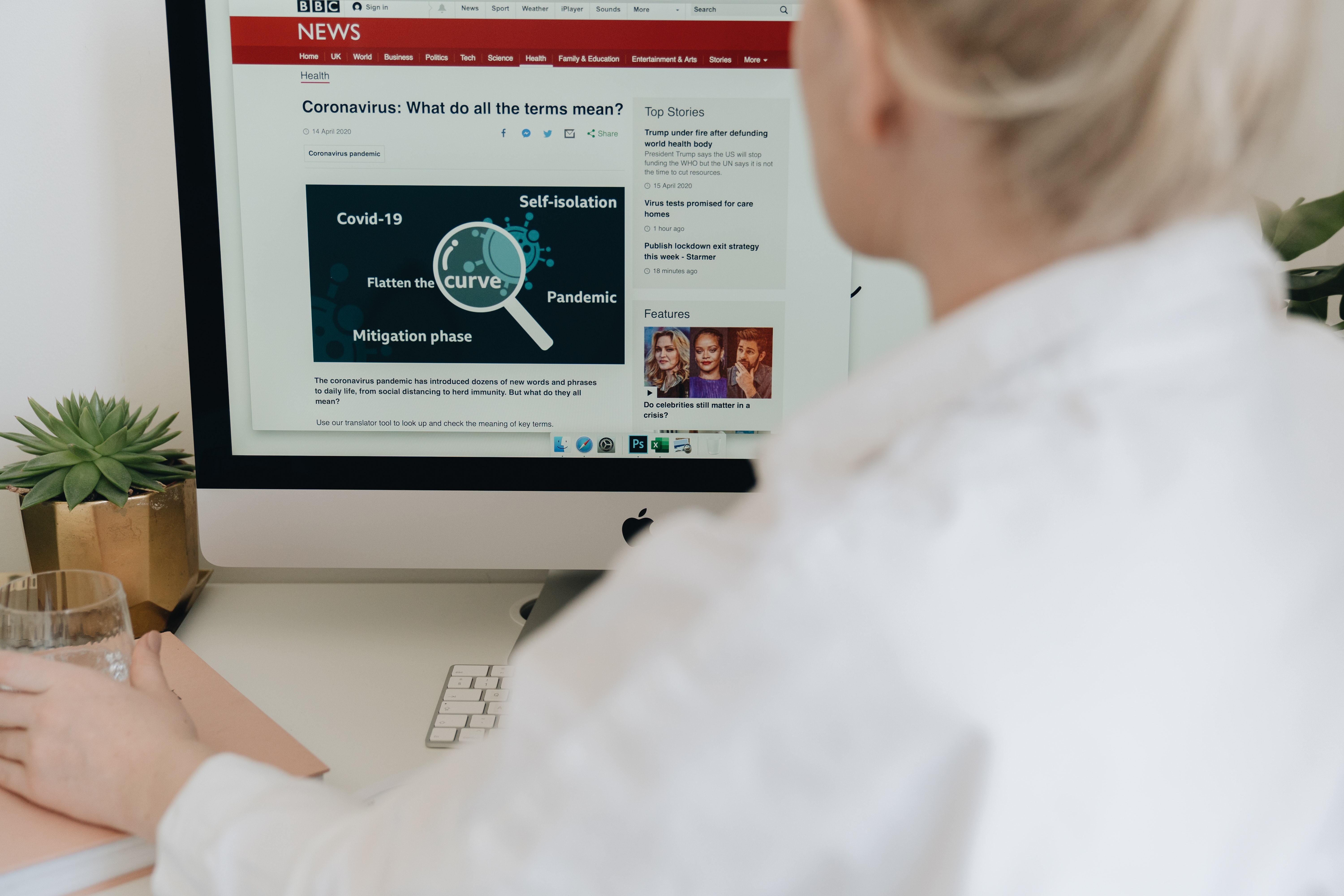ESM Welcomes College MatchPoint to the Team! Learn More

We are bombarded with information from the second we open our eyes in the morning to the moment we finally fall asleep. Our waking life is full of text messages, social media scrolling, emails, school/work, and entertainment. We use all this information to make decisions in our lives.
From small daily decisions like where to order lunch from or what show to binge next, to major decisions—like what colleges to apply to or what career paths to embark on—accurate information is essential.
To put it another way, the quality of our information shapes the quality of our decisions and the quality of our decisions shapes our quality of life. Therefore, discerning the quality of information we ingest is incredibly important. The problem is, as humans, we’re not very good at discerning truth from fiction, especially on the Internet.
A 2016 study by the Stanford History Education Group of over 7000 middle school and high school students found that when asked to evaluate the quality of various websites, the students based their evaluations on superficial aspects of the sites that had nothing to do with their content. They used the look or feel of the website, its layout, and whether or not it had charts and graphs when making their decisions. All of these features can be easily modified by the people who created them and have nothing to do with the quality of the information contained in the site.
The same study also looked at college freshmen, professors with PhDs, and professional fact checkers. In addition to looking at the surface details of the websites, the college students and professors looked at whether or not the website had footnotes or links to other pages. Others said they based their assessments on the site’s URL, but this technique is far from reliable.
For example, martinlutherking.org is not, as it is designed to look, a historical information webpage about the famous civil rights leader Dr. Martin Luther King, Jr. Rather, it is a white supremacist website that reports a false, revisionist history of the leader’s life and works. You would never suspect this from its professional appearance and URL. At first glance, an unsuspecting student may be taken in by the site’s deception and come to believe utterly false disinformation about Dr. King. Moreover, that student may then share said disinformation with their peers and social media contacts. Worse than simply a poor grade on a history assignment, sharing disinformation can be dangerous, so spotting it is incredibly important.
The only group from the Stanford study that successfully determined fact from fiction were the professional fact checkers (unsurprising, but comforting to know). So what do fact checkers use to evaluate information found online? They employ lateral reading and ask three important questions:
Let’s unpack each of these questions.
Nothing on the Internet exists there by accident. Nothing was born there. Every single webpage was created by a person for a specific reason. That reason could be to inform, to entertain, to sell a product, or to spread an ideology. The first thing a fact checker does when they encounter a website is to ask who is behind it? That is, who created it and what was their motivation for doing so?
For example, say you read a news article about a proposed piece of legislation. You would want to ask, who wrote it? Does that person have a vested interest in the law passing or failing to pass? Where did the money to publish the article come from? Who owns the news organization? Does that corporation have a vested interest in the law passing or failing? The answers to these questions can help you to spot bias and conflicts of interest present behind the scenes of the website or news story.
Evaluating the accuracy of the information we read depends on our understanding of the evidence provided. Evidence is any piece of information (fact, statistic, chart, or image) presented to back up a claim.
This is very important: the mere presence of evidence says nothing about the quality of that evidence. The presence of a pie chart or graph says nothing about the validity of the information being conveyed by it. Instead, one must ask, where does this evidence come from? What’s their source?
Remember, not all evidence is created equal. One’s opinion may be offered as evidence to support a claim, but unless that opinion is backed up by peer-reviewed research or some other form of data, it is merely an opinion, a preference for one thing over another—not a fact.
If you are unsure about the trustworthiness of a given website, use a search engine to investigate what others have said about that website. Deciphering reliable websites from unreliable websites can be as simple as running it through a search engine to see what information you discover.
The technique of leaving a site in order to evaluate that site is called lateral reading. Rather than vertical reading, where we start at the top of a web page and scroll downwards, lateral reading involves opening a new tab and investigating the webpage in question by searching for information about said webpage.
Where the students and professors in the Stanford study used the site itself to evaluate it, fact checkers leave the site and read what others have said about the site, its creators, and the quality of the information contained therein. They then evaluate those sites in the same way and construct their own conclusions based on their investigation.
Disinformation and misinformation are everywhere. Lateral reading and thinking like a fact checker can vastly improve our ability to evaluate the quality of information we encounter and thereby make better decisions, big and small.